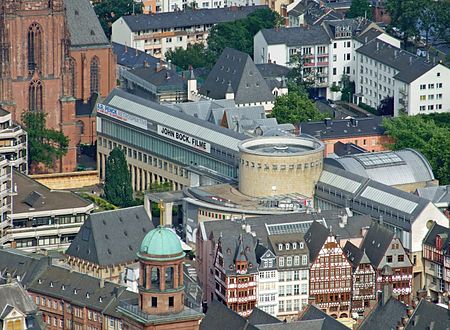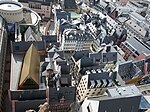Schirn Kunsthalle Frankfurt

The Schirn Kunsthalle is a Kunsthalle in Frankfurt, Germany, located in the old city between the Römer and the Frankfurt Cathedral. The Schirn exhibits both modern and contemporary art. It is the main venue for temporary art exhibitions in Frankfurt. Exhibitions in recent years included retrospectives of Wassily Kandinsky, Marc Chagall, Frida Kahlo, Alberto Giacometti, Bill Viola, and Yves Klein. The Kunsthalle opened in 1986 and is financially supported by the city and the state. Historically, the German term "Schirn" denotes an open-air stall for the sale of goods, and such stalls were located here until the 19th century. The area was destroyed in 1944 during the Second World War and was not redeveloped until the building of the Kunsthalle. As an exhibition venue, the Schirn enjoys national and international renown, which it has attained through independent productions, publications, and exhibition collaborations with museums such as the Centre Pompidou, the Tate Gallery, the Solomon R. Guggenheim Museum, the Hermitage Museum, or the Museum of Modern Art.
Excerpt from the Wikipedia article Schirn Kunsthalle Frankfurt (License: CC BY-SA 3.0, Authors, Images).Schirn Kunsthalle Frankfurt
Saalgasse, Frankfurt Altstadt (Innenstadt 1)
Geographical coordinates (GPS) Address Website External links Nearby Places Show on map
Geographical coordinates (GPS)
| Latitude | Longitude |
|---|---|
| N 50.110277777778 ° | E 8.6836111111111 ° |
Address
Schirn Kunsthalle
Saalgasse 20
60311 Frankfurt, Altstadt (Innenstadt 1, Innenstadt)
Hesse, Germany
Open on Google Maps











